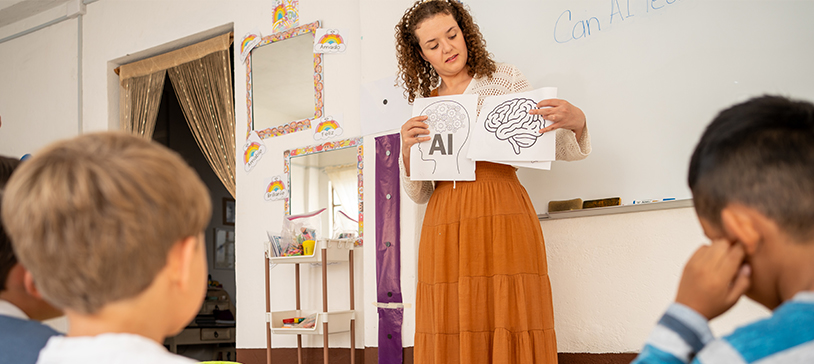
INTENTIONAL LEADERSHIP IN A SHORTCUT ERA

There has never been a more critical moment for intentional leadership in K-12 education. While AI is transforming the way we work, learn, and communicate, it has also become the ultimate shortcut for a generation already conditioned to avoid friction. Students now have the ability to offload thinking to a machine at the exact moment they should be learning how to think for themselves. And that’s where the alarm bells should be ringing for every educator and K-12 leader.
You can’t build strong critical thinkers without lived experience, and you can’t spark imagination without boredom. Yet both conditions are vanishing from childhood.
Once upon a time, boredom was a gift. When kids had nothing to do, they created something to do. They invented games in backyards, wrote stories in their heads, built worlds out of thin air, and learned to sit with discomfort long enough to transform it into curiosity. That friction grew intellectual, emotional, and social muscles.
Today, those muscles are atrophying. A constant deluge of digital stimulation means young people rarely have to generate their own ideas. They scroll through someone else’s story rather than living their own. And as the entertainment becomes more addictive, the imagination becomes more passive.
Now add AI into the mix. It’s like pouring rocket fuel onto an already blazing fire of distraction. Why wrestle with a math problem when an app can solve it? Why write a first draft when a chatbot will spit one out? Why think deeply when shortcuts are the norm?
This is exactly why K-12 leadership must step in with intention.
Educators are the real first responders of this moment. They are on the front lines of shaping human beings who can reason, imagine, collaborate, and build lives with purpose. And that requires boldly designing environments where students can’t hide behind algorithms.
“Yes, AI is a tool, but your mind is the asset.”
We need to intentionally reintroduce boredom. That means carving out space for daydreaming, reflection, and unstructured creativity. It means giving students time without screens and challenges without instant answers. Boredom is not the enemy; it’s a catalyst. It’s the oxygen imagination needs to ignite.
We also need to reintroduce real-world experience. Let students build things with their hands. Let them interact with their community. Let them solve problems that don’t come with hints or step-by-step solutions. At Canon, we believe that experience builds judgment, which is the foundation of critical thinking.
Intentional leadership means crafting learning environments that honor humanity over efficiency. It means guiding teachers to lean into curiosity and push students past the easy answers. It means saying, “Yes, AI is a tool, but your mind is the asset.”
If we fail to do this, we risk raising a generation that is technically competent but fundamentally disconnected from what makes them fully human. The goal isn’t to reject technology; it’s to protect our imagination, empathy, resilience, and creativity.
K-12 leaders have the responsibility and the opportunity to restore balance. Build thinkers. Build doers. Build young people who come alive, engage deeply, and elevate others.
If we don’t, the stories that shape their youth won’t be their own. They’ll belong to someone else. And that’s a shortcut we cannot afford.


